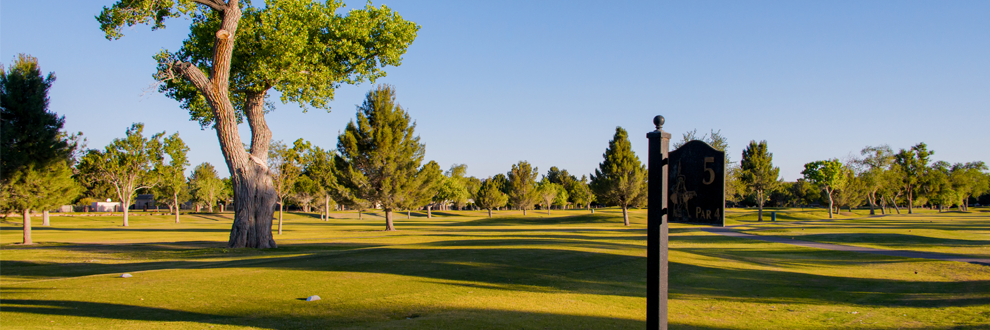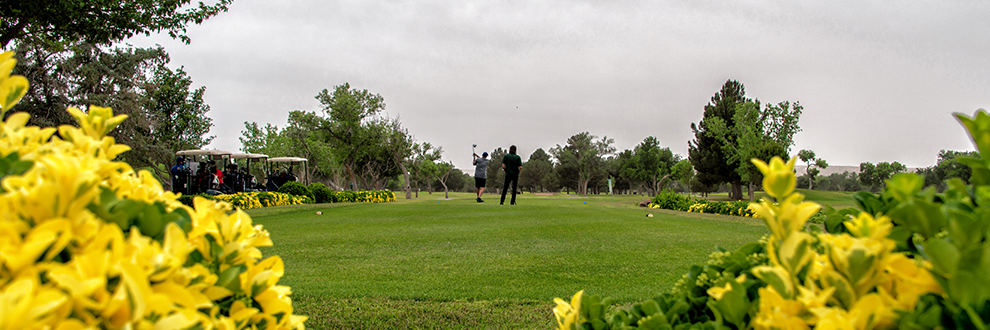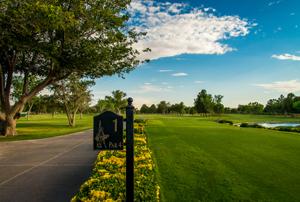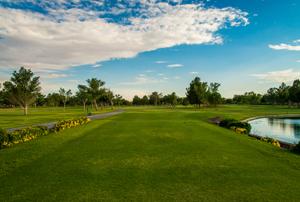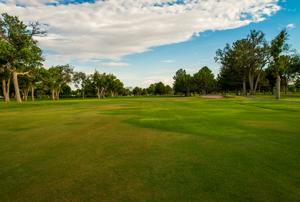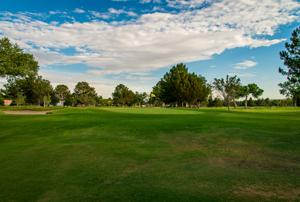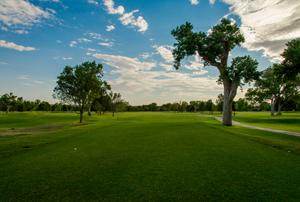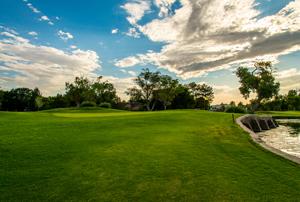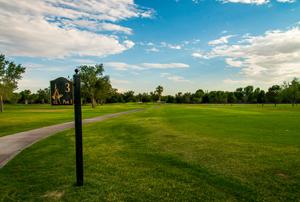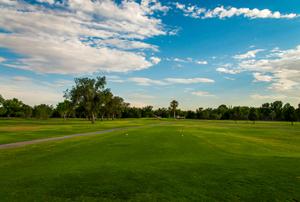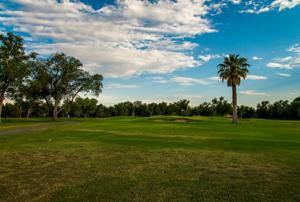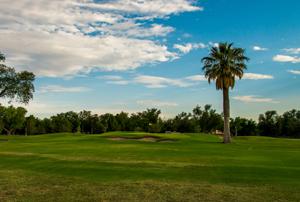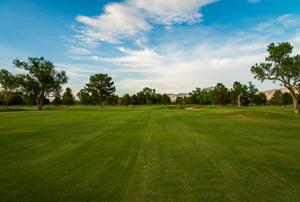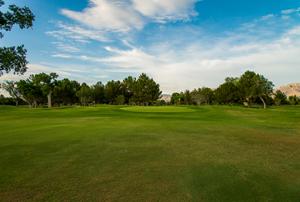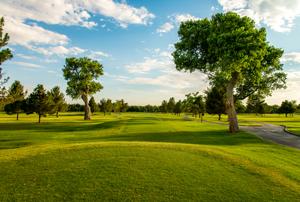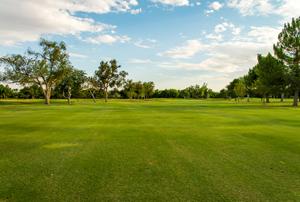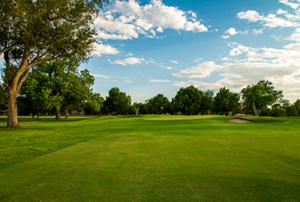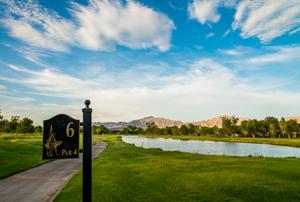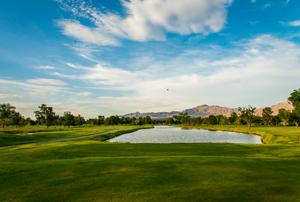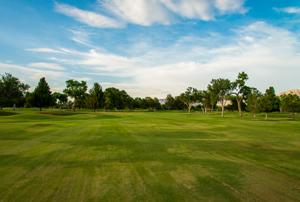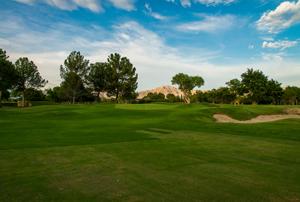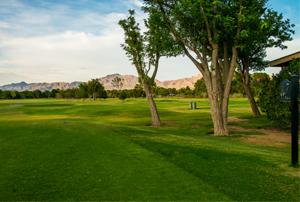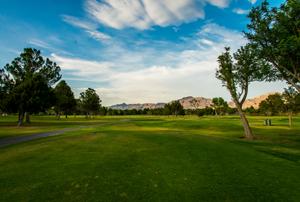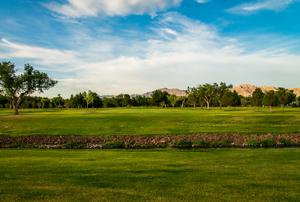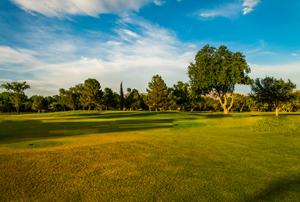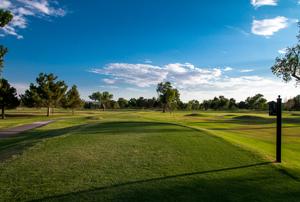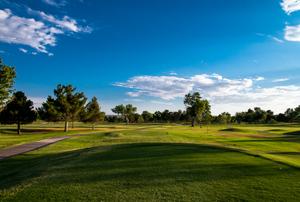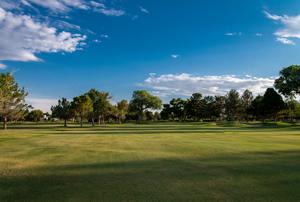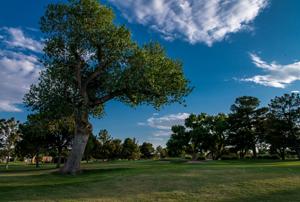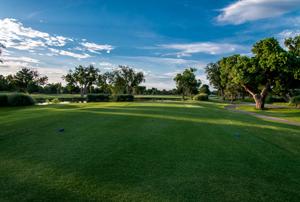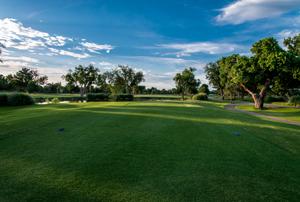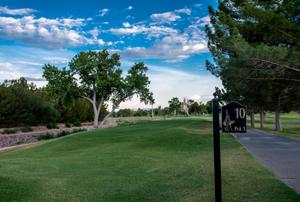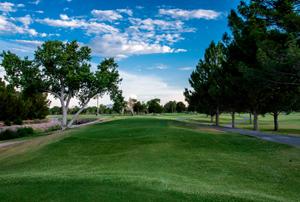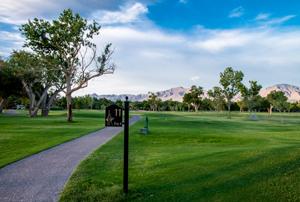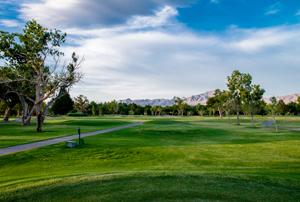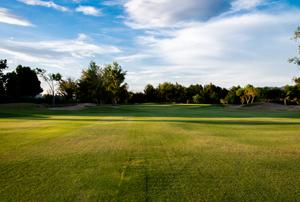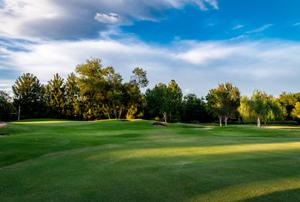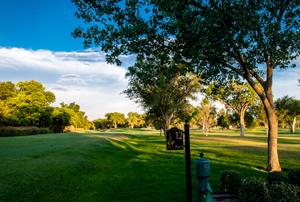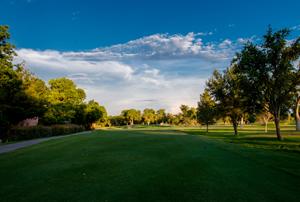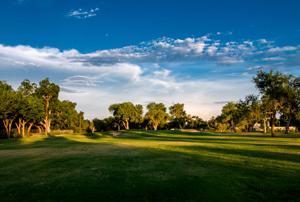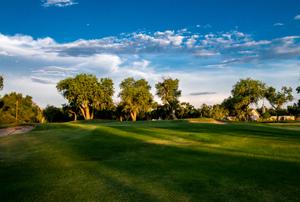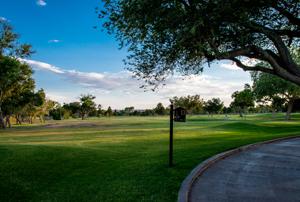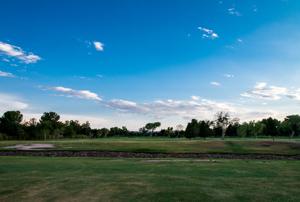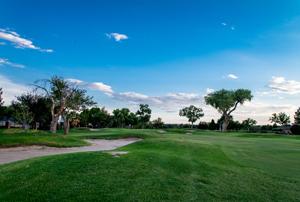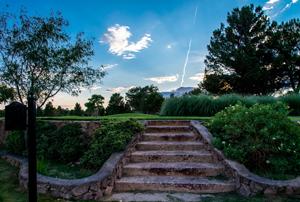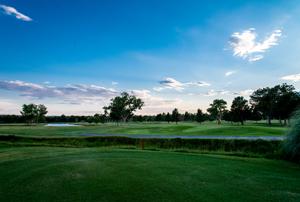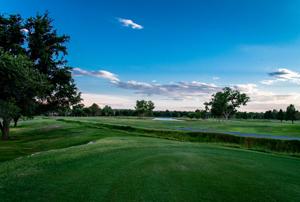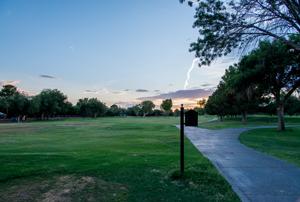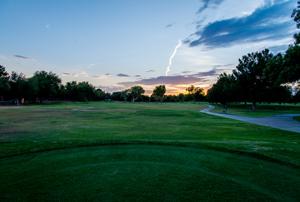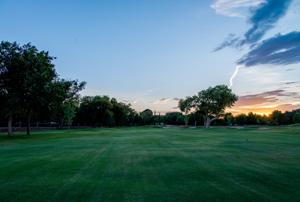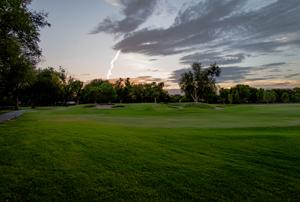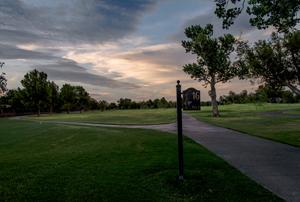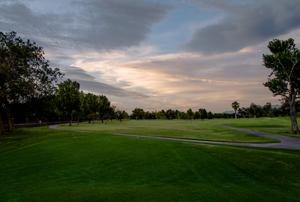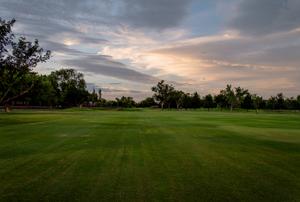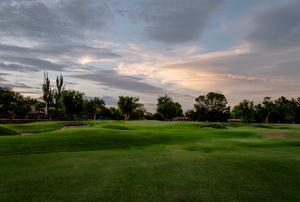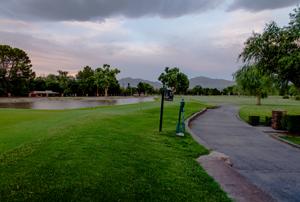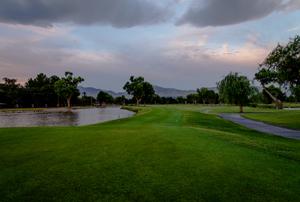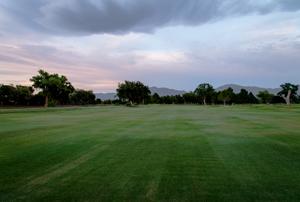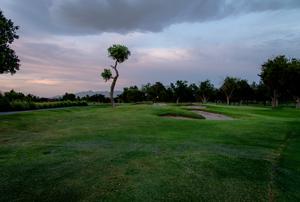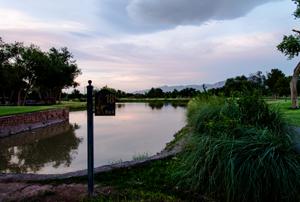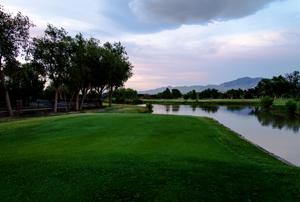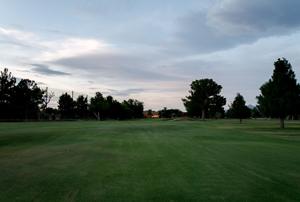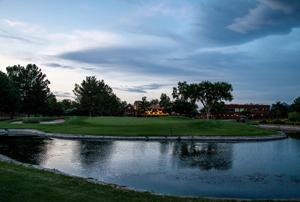Course Tour
A championship golf course to challenge the beginner and the professional.
| Gold | Blue | White | Red |
|---|---|---|---|
| 420 | 402 | 385 | 366 |
The opening hole is a daunting challenge to start the round. One of the longer par 4's on the course it demands an accurate and lengthy drive. A gentle dog leg to the left with trees on both sides of the fairway. A large fairway bunker lies on the right side of the fairway to swallow up any drive that strays to the right. A well positioned drive will leave you facing a very difficult green. Pin locations on the back and on the back left sides of the green demand absolute precision from the fairway. A large greenside bunker guards the front left side of the green. Walk off this green with a par you have a good start to your round.
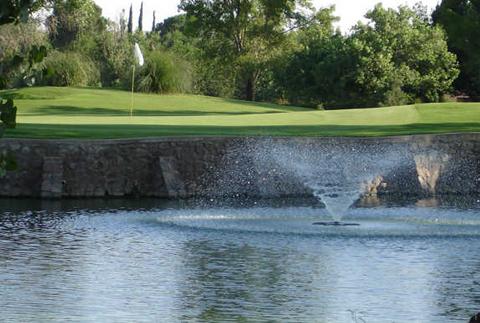
| Gold | Blue | White | Red |
|---|---|---|---|
| 380 | 354 | 345 | 325 |
The second hole is a dogleg right par 4. The dangers on this hole lie in the drive and near the green. From the tee the right side is lined with trees. Players that challenge the corner of the dogleg could find themselves chipping back out to the fairway. Even if you find the fairway you will be left with a difficult second shot. The right side of the green is protected by a water hazard, the left side of the green is well bunkered and there is a false front. The second hole demands solid course management.

| Gold | Blue | White | Red |
|---|---|---|---|
| 175 | 154 | 146 | 133 |
Number 3 is the shortest par 3 on the course, but do not let its lack of distance lull you into a false sense of confidence. The number 3 green is one of the most challenging greens on the course. Three large bunkers divide this green into three distinct sections. Land in any of these bunkers or land in the wrong section and there will be lots of work left for your par.

| Gold | Blue | White | Red |
|---|---|---|---|
| 463 | 412 | 387 | 372 |
As you walk to the 4th tee you see a rather mundane hole. A straight away par 4 with a large fairway and green is usually how this hole is described. Number 4 does have some tricks up its sleeve. A large bunker protects the right side of the fairway, cutting the landing area in half. Because of the trees that line both the right and left side of the fairway it is almost impossible to not challenge the bunker that appears in the fairway. Number 4's length leave you with a longer than normal second shot. Be aware of the bunker on the left side of the green and be especially cautious of the back left pin position.

| Gold | Blue | White | Red |
|---|---|---|---|
| 409 | 372 | 343 | 310 |
Bunkers are the theme to this short par 4. A large fairway bunker on the left side of the fairway catches your eye from the tee as it reduces the landing areas for your drive. After successfully navigating your drive you face a well bunkered two teared green. Make sure you're on the right level to have a solid chance for your birdie or par.

| Gold | Blue | White | Red |
|---|---|---|---|
| 410 | 385 | 351 | 301 |
One of the most challenging tee shots awaits you as you approach the sixth tee. Water lines the entire right side of the hole and a bunker on the left side of the fairway penalizes those who bail out to the left. The green you face is well protected. Deep bunkers protect the entire right side of the green while a water hazard grabs any shots that go over the green. There are many challenging pin positions on this green making #6 one of the more difficult holes on the course.

| Gold | Blue | White | Red |
|---|---|---|---|
| 451 | 420 | 388 | 354 |
To go or not to go? A question you must ask when deciding what club to hit from the tee. #7 is a fairly long par 4, but with a twist. A large canal cuts the hole in half. Only a well struck driver will carry over the canal. Leave the drive in the bag and be left a long, but dry, second shot of nearly 200 yards into the only green not protected by a bunker. Your success on this hole depends mainly on your decision on the tee.

| Gold | Blue | White | Red |
|---|---|---|---|
| 388 | 328 | 303 | 265 |
A short par 4 is in order after the last two holes. Only trouble is you are playing #8. Off the tee you must navigate several fairway bunkers on the right and trees on the left. When in the fairway you must be aware of where the hole is cut on the green. Play to the wrong side of this green and a three putt is in order. Also be aware of the hole locations on the left side of the green and your proximity to the large Cottonwood tree near the green. That tree has a habit of swallowing up second shots.

| Gold | Blue | White | Red |
|---|---|---|---|
| 550 | 500 | 420 | 401 |
The lone par 5 on the front 9 is not the longet par 5 in the region but it has teeth. Your drive must avoid water, sand and trees. Only a well placed drive will give you an opportunity to go for this green in two. For those forced to lay up your work has just begun. Large trees in the middle of the fairway demand that you place your second shot in the proper location in the fairway. The green is well bunkered and you must respect the back left hole location.

| Gold | Blue | White | Red |
|---|---|---|---|
| 213 | 175 | 157 | 122 |
The second par 3 starts you off on the back nine. A water canal runs along the left and back of the green awaiting any shot that is slightly pulled to the left. There are two bunkers that protect the right and left side of the green. Any shot that finds the green on this long par 3 is a good shot.

| Gold | Blue | White | Red |
|---|---|---|---|
| 387 | 370 | 351 | 287 |
This dogleg left par 4 is a challenge from tee to green. From the tee you must shape your drive around several fairway bunkers. In order to achieve success on the green your second shot must find the correct section on the green. Any errant second shots will leave you in one of the more difficult green side bunkers or collection areas.

| Gold | Blue | White | Red |
|---|---|---|---|
| 199 | 160 | 135 | 125 |
Number 12 is the last par three you will face. It plays as long as 220 yards. This hole's difficulty is in the pin placement. The 12th green is a two tiered green with three distinct sections. Find yourself in the wrong part of the green and watch out. In some cases you are better off missing the green in the region of the pin versus hitting the wrong side of the green.

| Gold | Blue | White | Red |
|---|---|---|---|
| 547 | 527 | 497 | 452 |
The second of the course's two par 5's. It is the only par five I know of where you can hit the green in two without hitting my driver off the tee. The reason for this is number 13 runs along side number 7. And so, just like number 7, a water canal splits the hole in two. This canal forces a number of lay ups to its edge. Only a driveof over 300 yards plus can guarantee a successful carry over the canal. At the canal's edge you face a very difficult decision, whether or not to go for it. You are left with nearly 250 yards into a very well defended green. Several bunkers protect this green and certain pin positions are very difficult to access. Lay up and your wedge shot in must also be on target to find any success on this hole.

| Gold | Blue | White | Red |
|---|---|---|---|
| 420 | 376 | 359 | 337 |
When you step up to the tee on this hole two things grab your eye, the water on the right and the fairway bunker on the left. There are no real bailouts on this hole because the water and out of bounds on the left run the length of the entire hole. If you do happen to find the fairway you are going have to make sure you understand and respect certain hole locations. Pins cut in the front, back and right of the green are on slopes that run away from the center of the green. Miscalculate your second shot and you could be facing one very difficult up and down.

| Gold | Blue | White | Red |
|---|---|---|---|
| 336 | 325 | 316 | 284 |
This drivable par 4 is a hole that likes to bite back. You can challenge this hole from many different angles. Large trees split the fairway into two distinct sections. Take the left line from the tee and you must carry several fairway bunkers, take the right side and you must manuever around several trees and fairway bunkers. After dealing with your drive you face a green affectionately called the "potato chip". This small and narrow green has no level spot. Every hole location is a headache waiting to happen. There are also no bailouts around the green. Fall short and end up in a deep bunker, go long and watch your ball roll forever down the back of the green. #15, just becuase it's short doesn't mean it won't bite.

| Gold | Blue | White | Red |
|---|---|---|---|
| 378 | 358 | 341 | 302 |
Wait before you pull out your driver. See the out of bounds to the left, what about the trees on the right? Don't forget the fairway bunker in the landing area. This hole demands placement over power, especially since the trees on the right can hinder your approach shot into the green and the bunker can leave you with a 100-125 yard sand shot. The 16th green is one of the most severely sloped greens on the course. It is well bunkered and precisioin is a must if you decide to challenge one of the protected pin locations.

| Gold | Blue | White | Red |
|---|---|---|---|
| 375 | 378 | 357 | 335 |
Have you ever seen so much water? That is what comes to mind when lining up your tee shot. #17 is a dogleg left par 4 with water all along the left side. A total risk reward situation as you decide how much of the water you will try and carry in order to reduce the distance you have for your second shot. If you decide not to challenge the water be aware that the right side is no picnic either. A large complex of fairway bunkers and trees guard against a free pass on the right side. The second shot you face is into a long narrow green that runs north-south to the player. It is well bunkered on the left side of the green and the fringe runs away from the green on the right side. Any shot missing the green just a little left or right will leave you with a difficult up and down.

| Gold | Blue | White | Red |
|---|---|---|---|
| 388 | 367 | 342 | 292 |
Just because it's the last hole doesn't mean you are going to be able to let down your guard. This difficult dogleg left par 4 is a tough test from the start. Out of bounds and several trees penalize any shots that stray left. The right side of the hole is well defended by trees and a fairway bunker. Since the green is protected by a water hazard that lines the front and left side, it is paramount that you find the fairway from the tee. Once in the fairway you face a rather large green with a steep slope in its first half, almost a false front. The back left and right hole locations are protected by rather large bunkers that will swallow up any shots coming up short. To find success on this green you must be precise with your distance and direction from the fairway.

Contact Us
Mark Pelletier, Director of Golf
[email protected]
915-584-0511
Daniel Dominguez, Head Professional
[email protected]
915-584-0511


